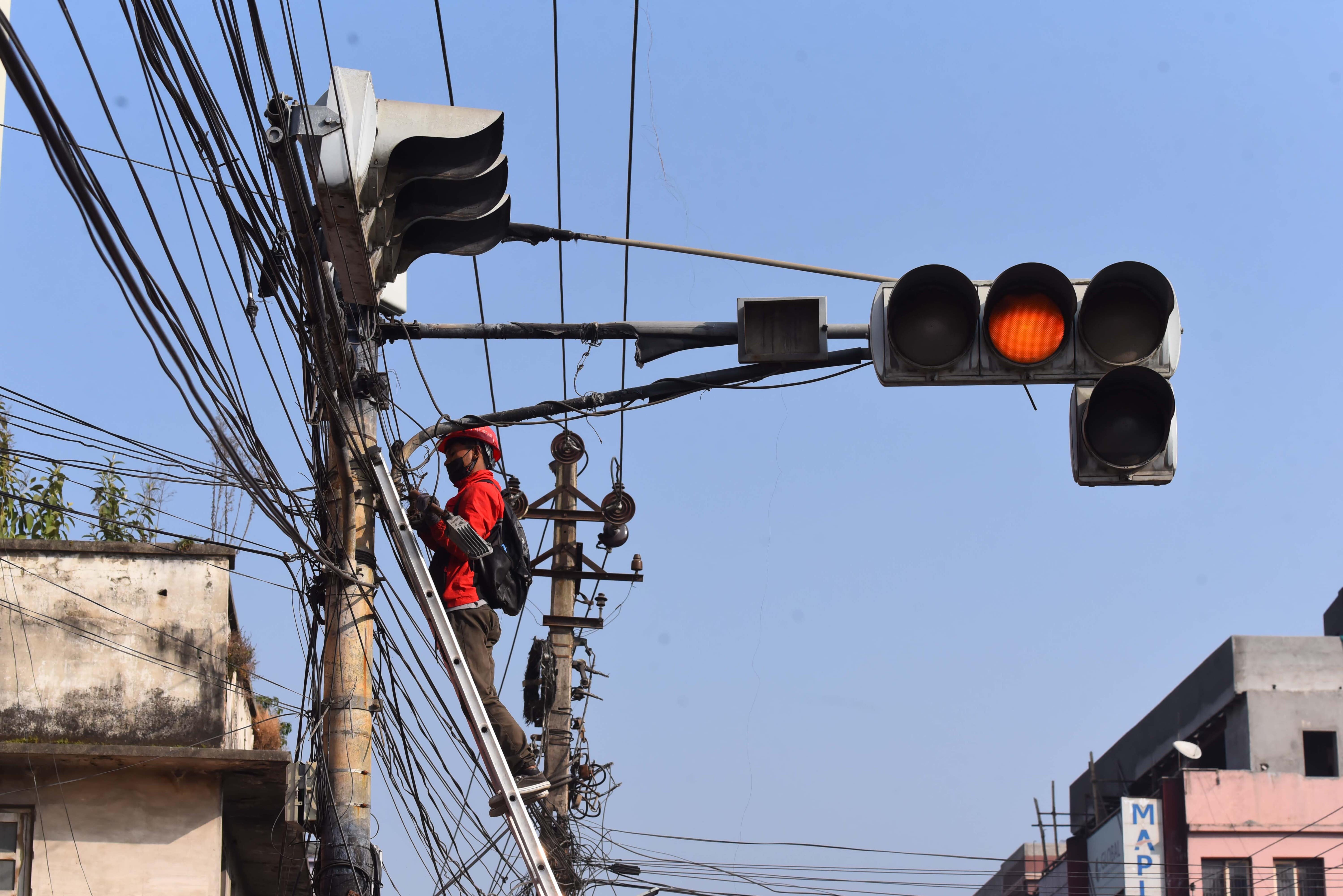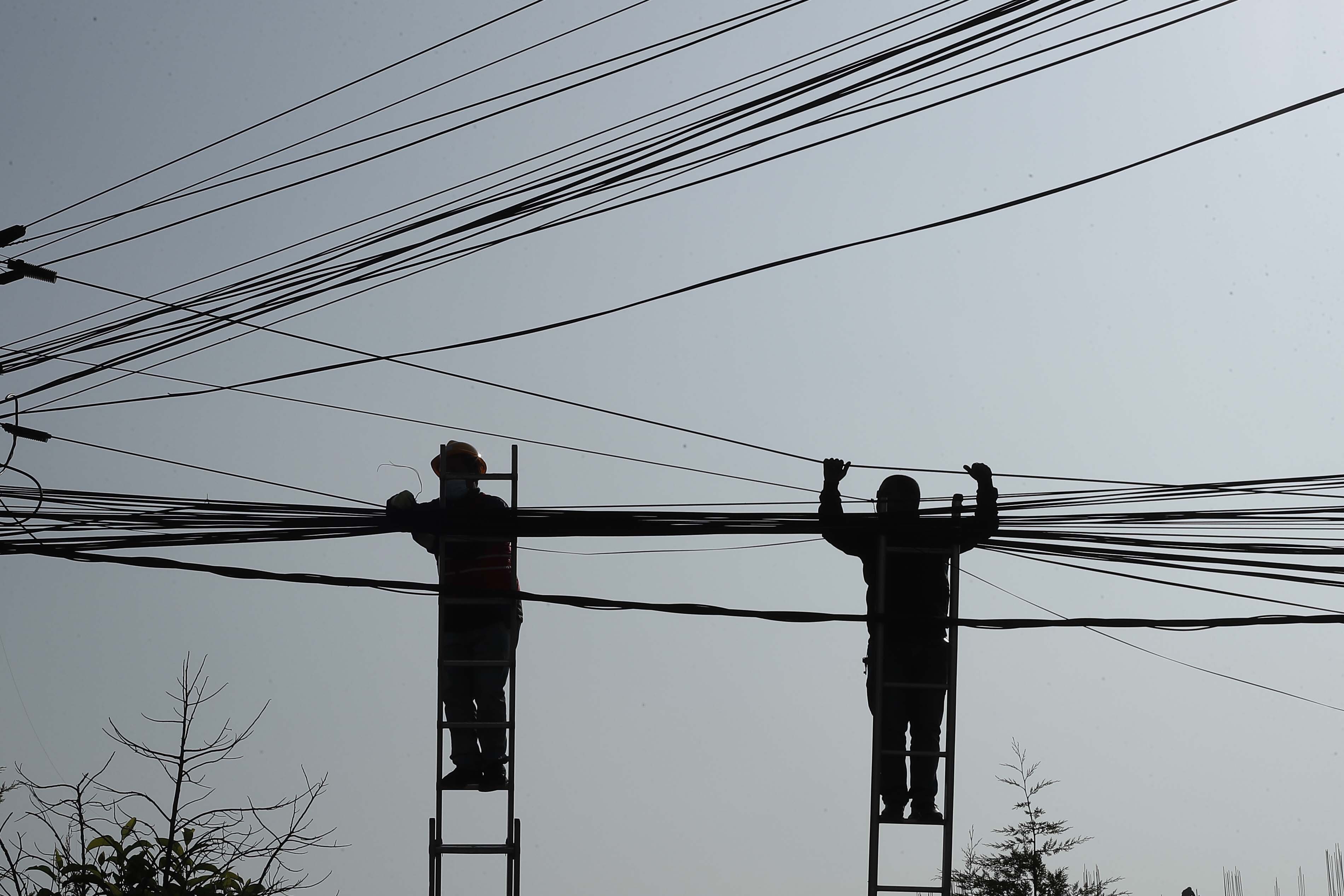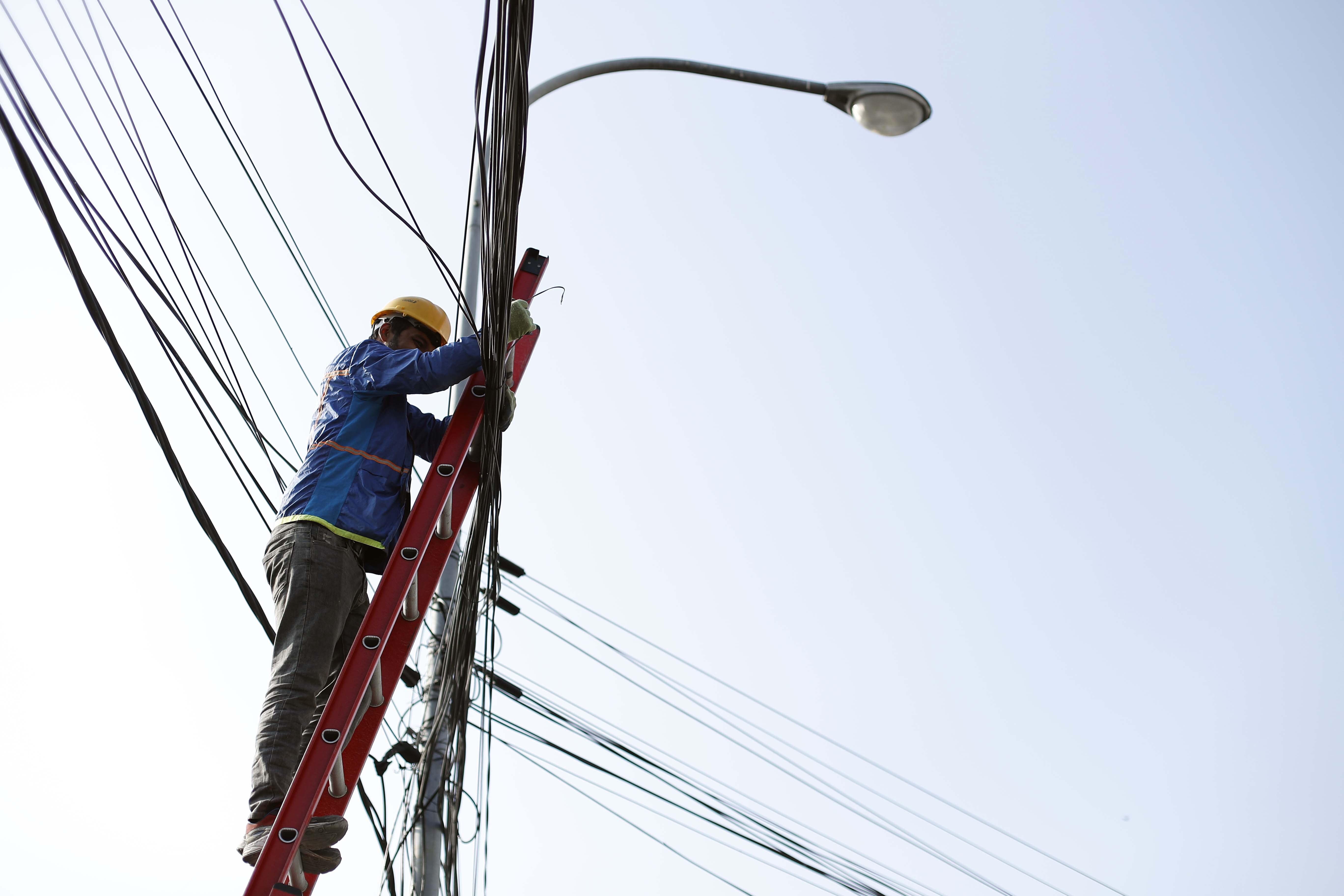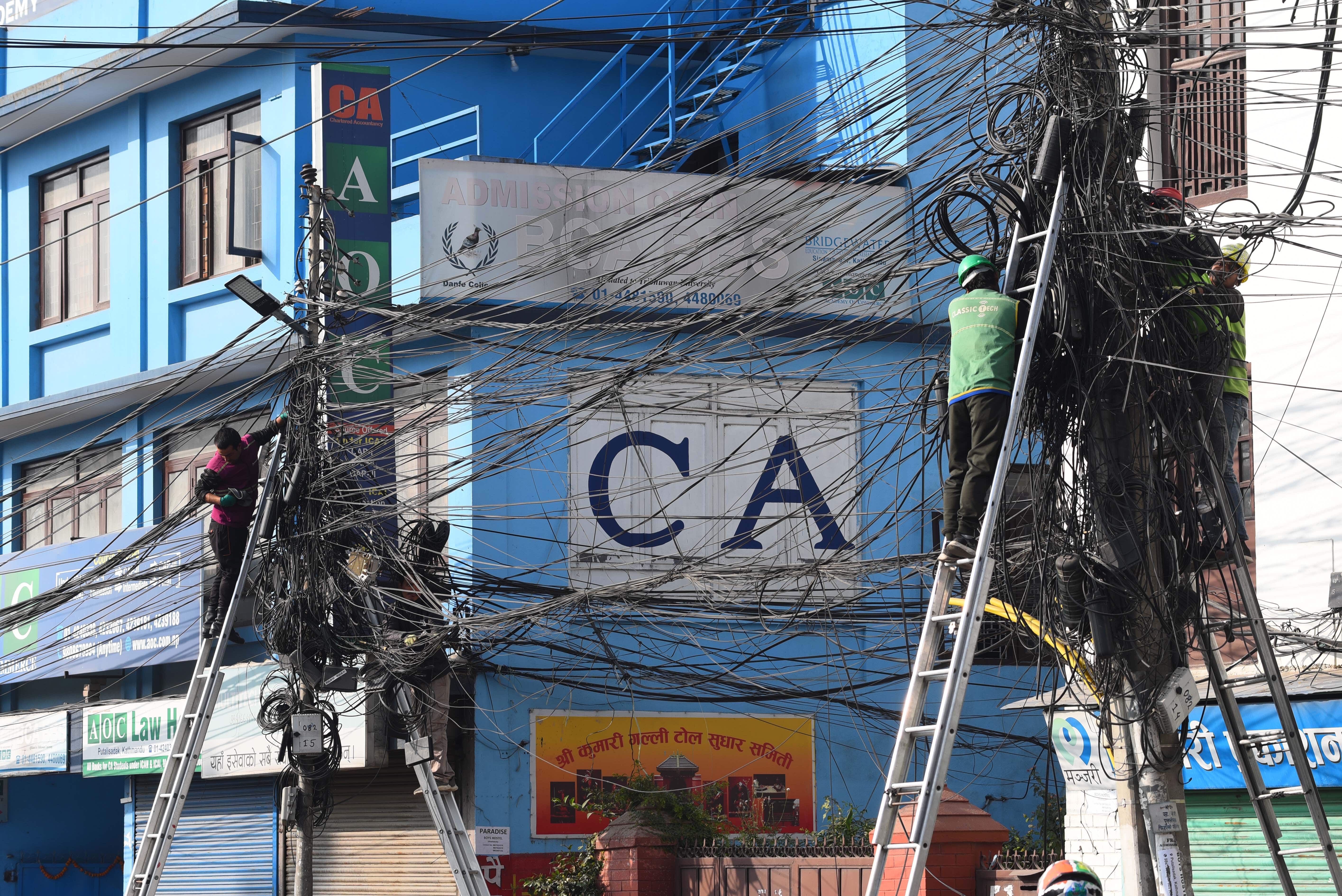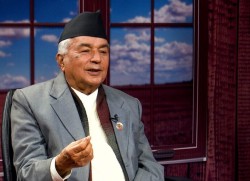Nepal
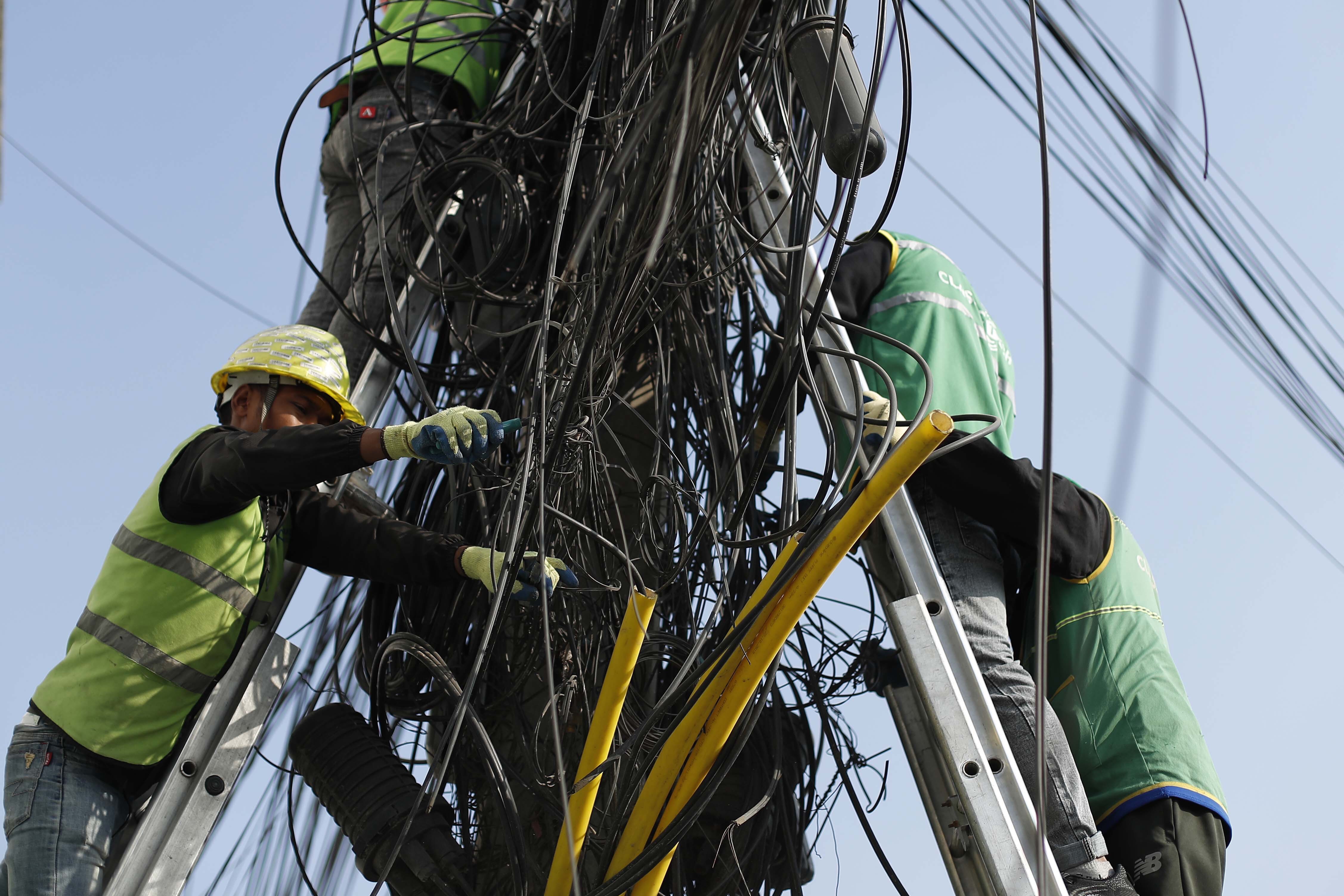
Walking across the busy Thapathali intersection is an involving exercise.
Being alert to the traffic on the road is not safe enough. Pedestrians also need to be watchful of the growing menace of telecom and internet cables hanging overhead, often used by monkeys on their daily journey in search of food.
The menace has become only more pronounced in the past few years as the internet has become an indispensable part of our life. The unregulated extension of internet cables has created webs of wire spaghetti on almost every street light pole at most places across the city.
The tangled cables, often dangerously hanging low, in many places in Kathmandu have not only spoiled the city’s skyline but have also posed a serious threat to road users.
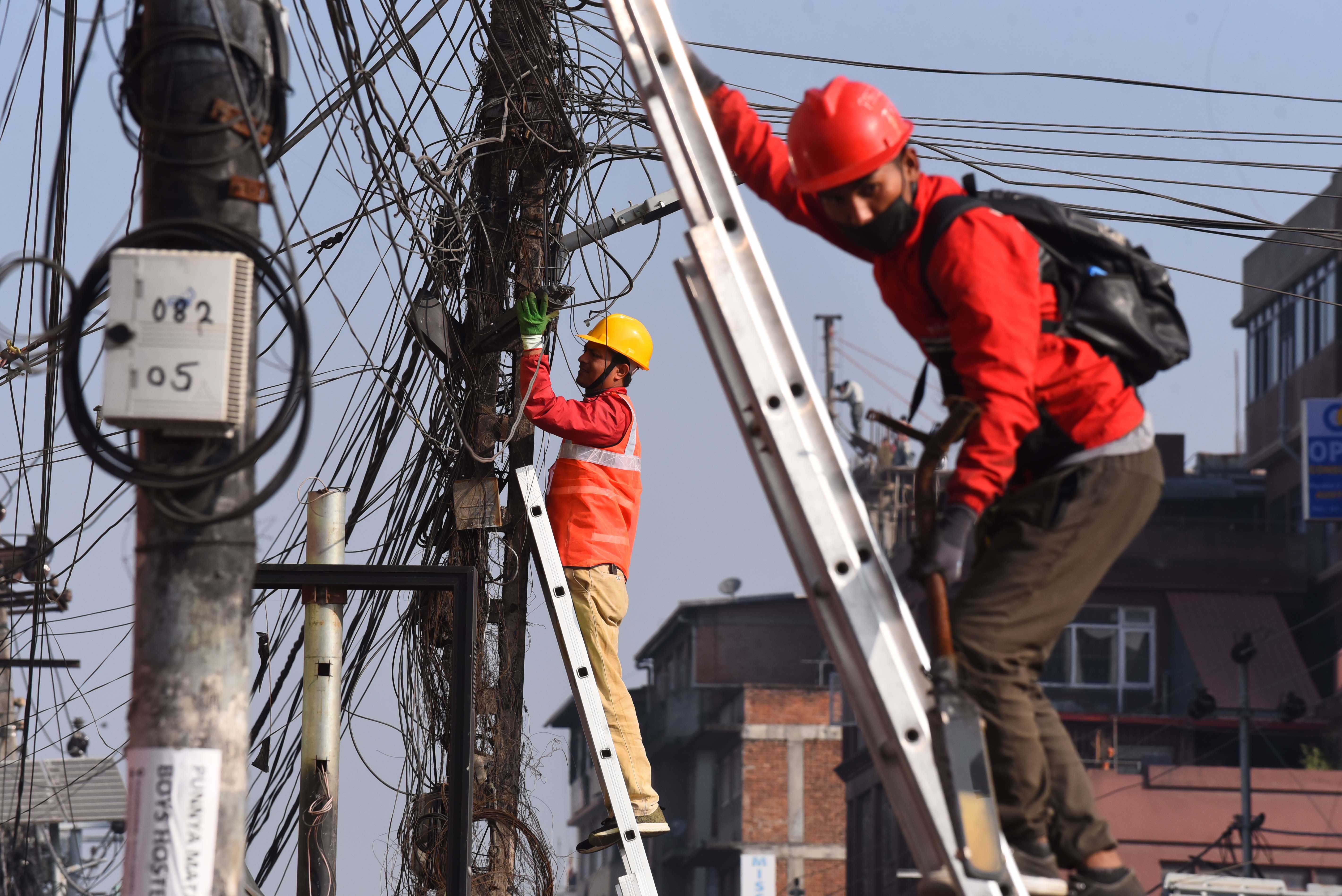
Overhead poles, put up by the Nepal Electricity Authority (NEA), have been rented by Internet Service Providers (ISPs), Cable TV providers, and telecom operators to run their cables through them.
To solve these problems, the Nepal Electricity Authority launched a pilot project in 2019 to bring the overhead power lines underground.
Works have been carried out in a few places over four years, albeit at a snail's pace.
On November 1, the NEA issued a notice giving internet service providers a 45-day ultimatum to manage television, internet, telephone wires, and equipment strung on utility poles.
In the strongly-worded notice, the state utility warned that it would start cutting off and removing the cables from the poles unless the ISPs complied.
The ISPs rushed into action, in collaboration with Nepal Telecom, Kathmandu Metropolitan City, Kathmandu Valley Traffic Police Office.
The ISPs managed the cables attached to the poles along the Putalisadak-Maitighar road in the first phase on November 12, according to the Internet Service Provider Association of Nepal (ISPAN).
In the second phase, cables along the Maitighar-Hanumanthan -Bhatbhateni supermarket section will be managed. The third phase of work will handle cables around the Hanumanthan-Anamnagar section and the fourth phase will cover the Anamnagar-Putalisadak area. The technicians are currently managing cables in the Singha Durbar area.
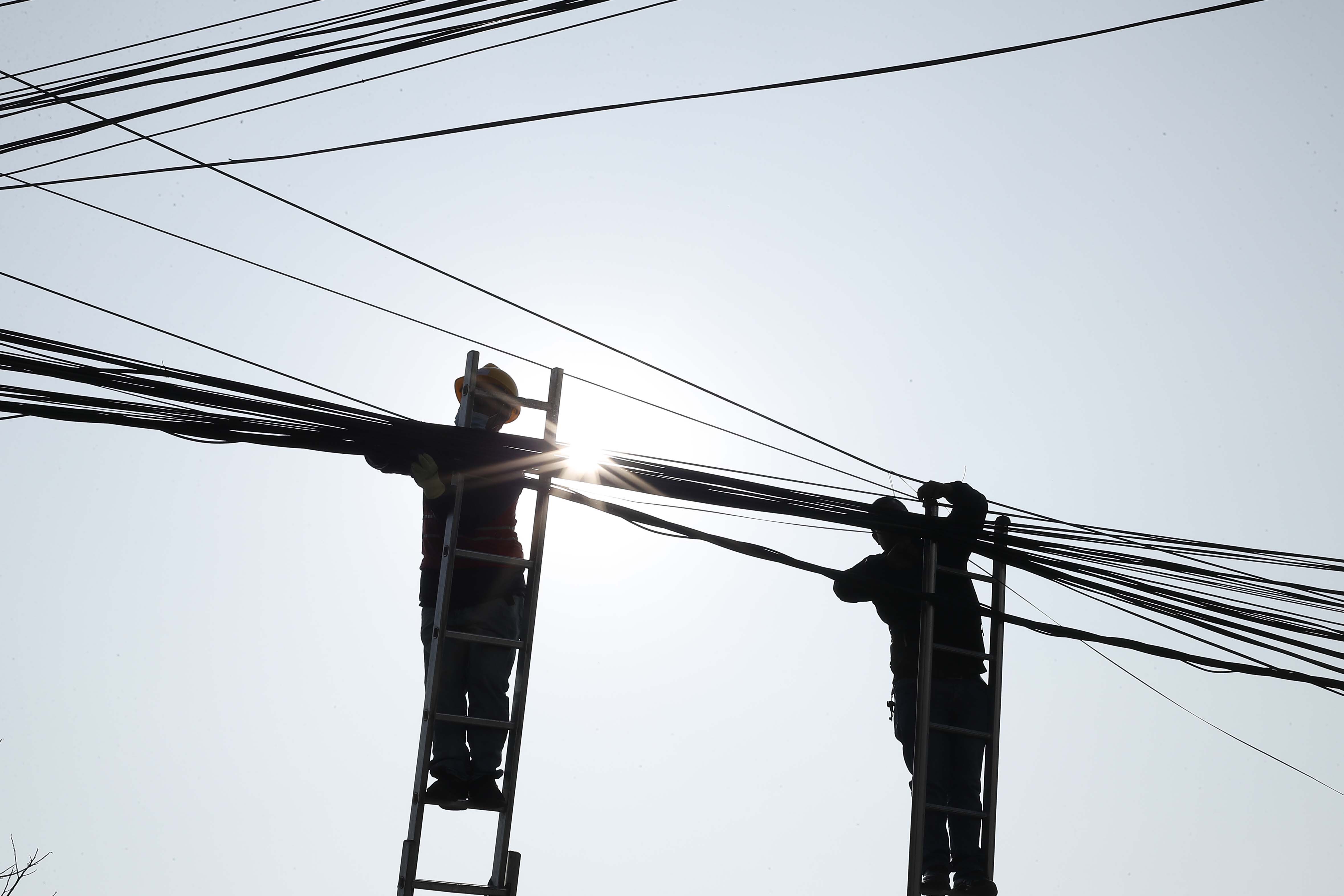
This is not the first time that the ISPs have started managing the messy cables, according to ISPAN. They claimed to have started managing the cables in various places in the country six months ago.
ISPAN CEO Subash Khadka said: “We started the work way before NEA issued the notice, keeping in mind the city's beauty and risk reduction. We have been organising the wires of essential internet services on a priority basis.”
During the period, ISPs managed the wires in Gokarneshwor, Tarkeshwor, Thamel, Tokha, and New Road areas. But managing the cables hasn’t been easy, said Khadka.
Challenges facing ISPs
Traffic flow:
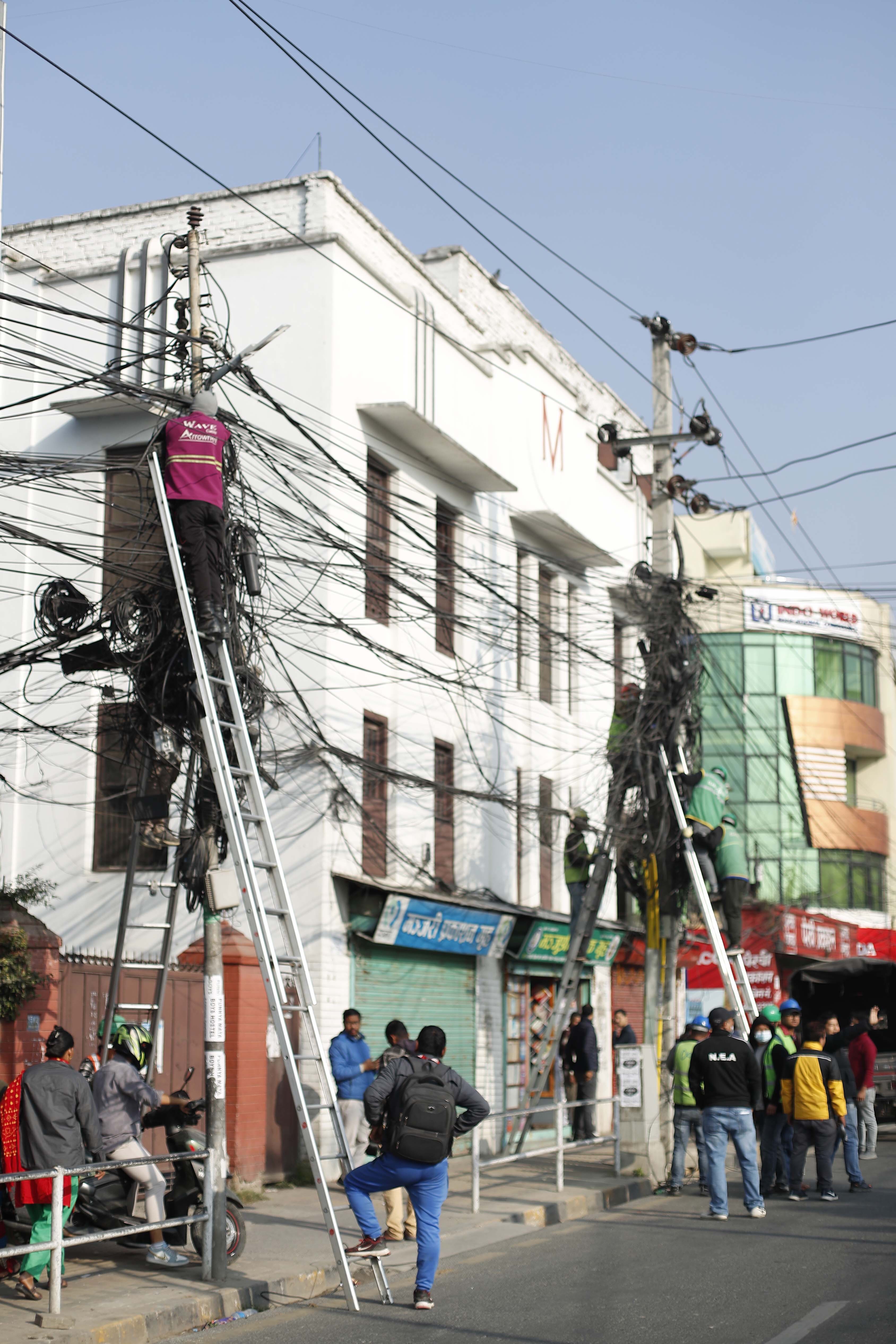
Traffic jams are all too common in Kathmandu today. People are forced to venture out one hour in advance if they have to reach somewhere near on time using a public vehicle.
Heavy traffic and busy streets, the ISPs are struggling to manage the cables in the Singha Durbar and Thapathali areas, according to the Service providers’ umbrella union, ISPAN.
“The Singha Durbar to Thapathali is the busiest road stretch in town. You’d hardly have any respite from the constant flow of traffic. Managing the wires in these areas is a huge task,” said Khadka.
As many traffic police personnel have been deployed on election duties, the roads have turned more choatic.
Messy cables:
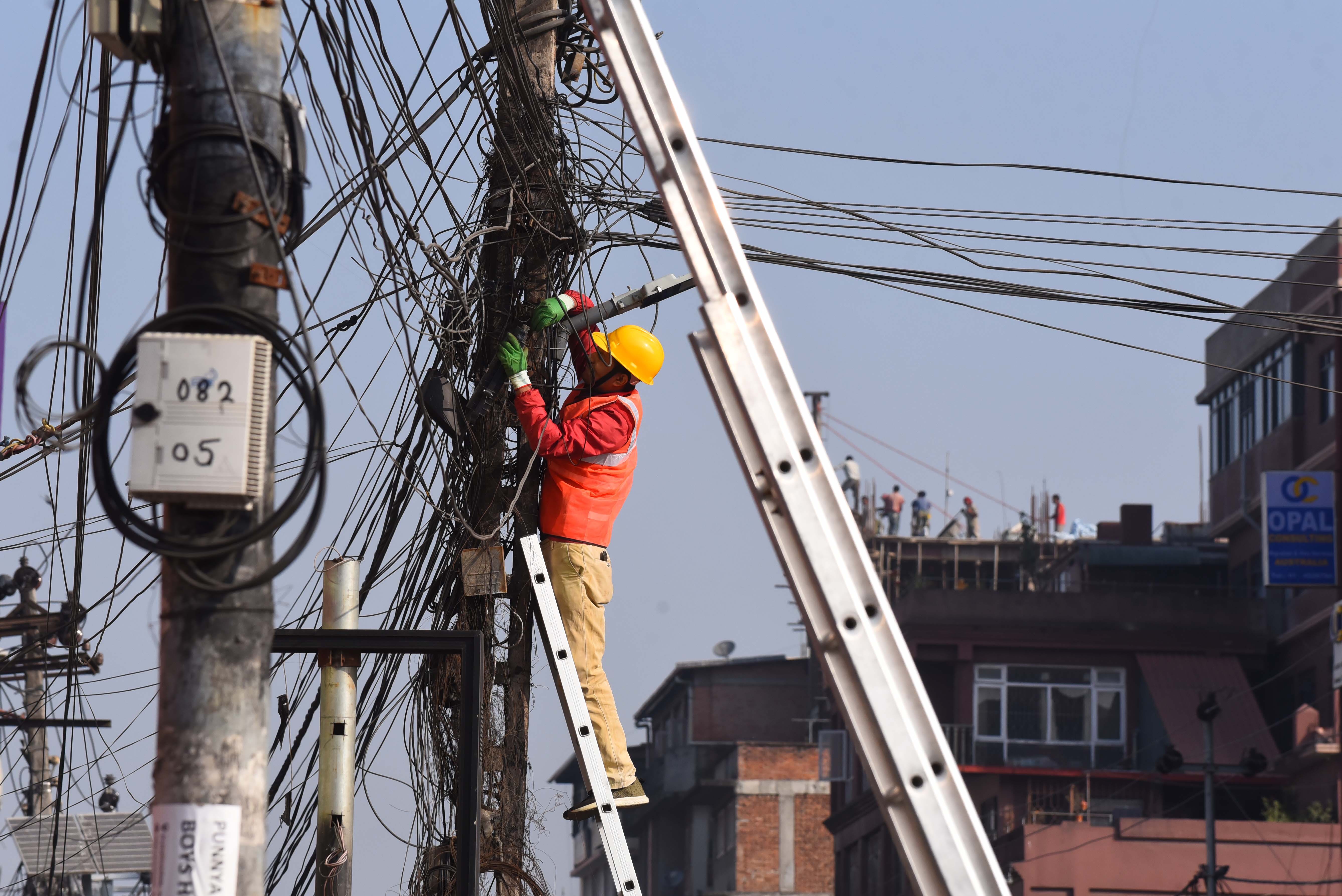
Managing tangled mess of cables serves up a nighmare for the ISP technicians: they have to first untangle the entire length of cables to manage them. Besides, they have to remove the unused wires from the poles which often disrupts services, leaving customers without internet hours on end.
“These poles also hold live electric cables that pose life-threatening risks,” said Khadka.
Will the ISPs manage all the cables across the time within the NEA deadline?
“No,” said Khadka. “The cables have been there for more than two decades. Although, we have been working overnight for the past six months, removing them in 45 days is out of the question.”
So, Nepal Telecom is planning to write a letter to the NEA, asking for a time extension.
Solution
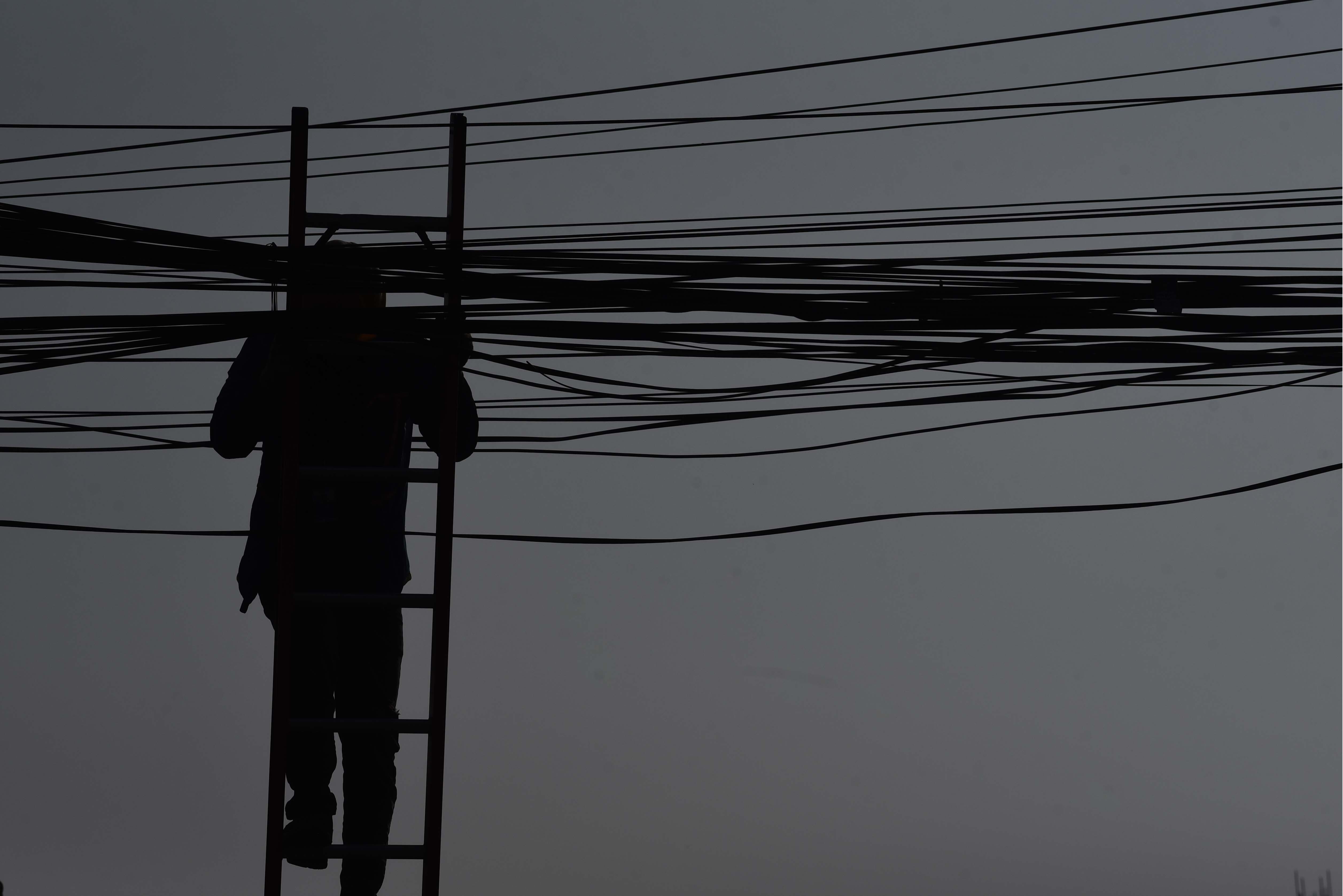
ISPAN has reiterated that managing the valley’s messy cables only serves the short term.
A long-term solution is only possible through the establishment of an infrastructure company, according to Khadka. The proposed infrastructure company aims to solve all these hurdles in managing infrastructure related to internet services in the country.
“We have been in talks with the government on the topic. The government has been positive about it,” he said. As they start cable management work, the ISPs are now demanding access to the underground cable duct system.
